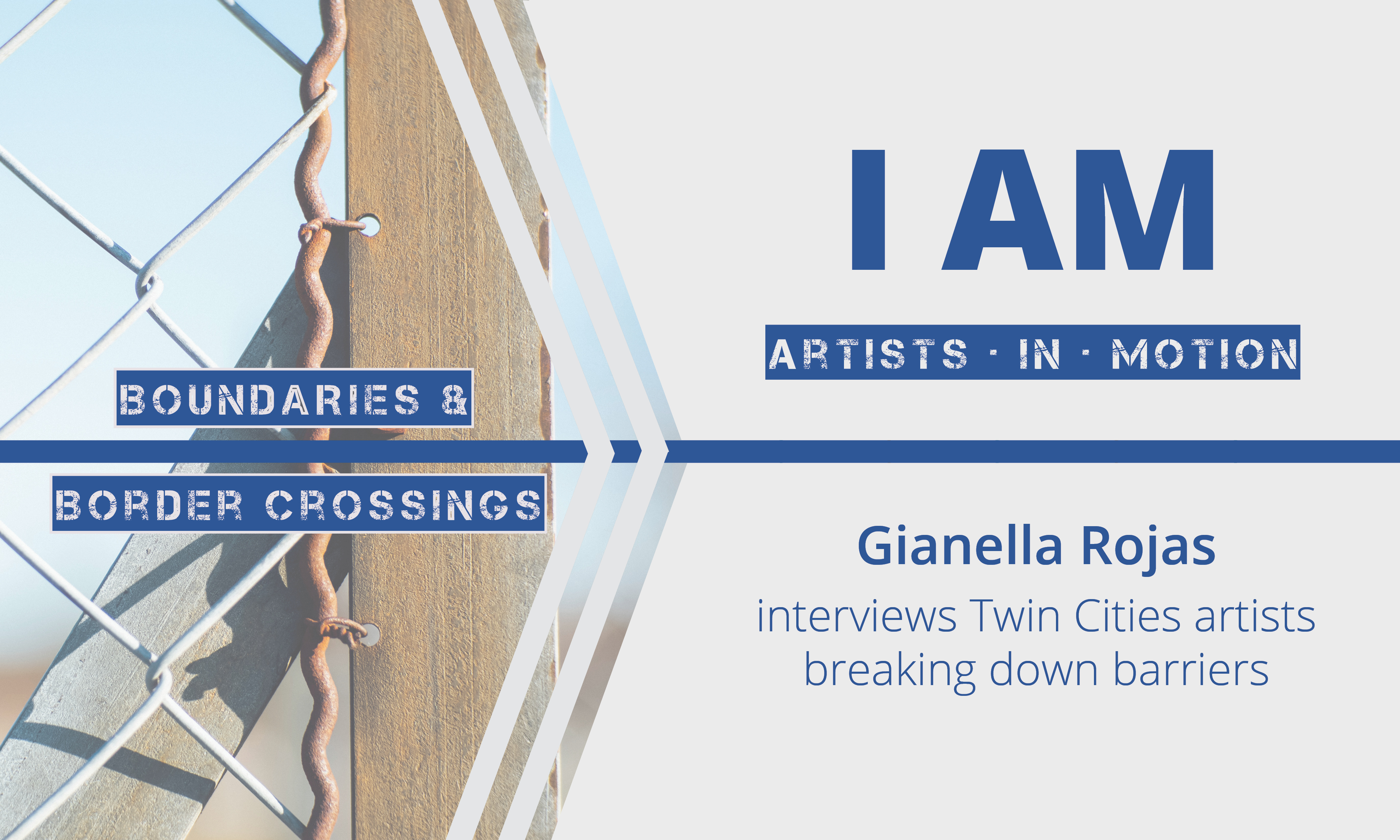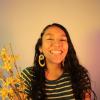Interview with Said Farah

I AM (Artist in Motion) is an interview series meant to spotlight indigenous artists and artists of color in the Twin Cities. I had the privilege of working at the Loft as the fall 2019 marketing and communications intern, and when they gave me the chance to work on a project of my choosing, I AM is the first thing I thought of.
The artists in this series were people I found truly inspiring. They incorporate art into their lives in many different ways and expressions, finding time whenever or wherever they can. They show how art can be a form of healing, understanding, and moving forward. I hope you take in their words and feel that for yourself.
________________________________________________________

Said Farah is a writer based in Minneapolis, Minnesota. He is a 2018 Alum of the VONA / Voices Workshop for Writers of Color. His work is in conversation with third-culture writers who’ve struggled to explore questions of identity, place, and belonging. He exists at the intersection of multiple identities, and writing is a way for him to parse the natural conflicts that arise from those multiplicities. He is currently pursuing his MFA at the University of Minnesota.
Who are you? What modes or mode of storytelling do you use?
My name is Said, Said Farah. I mostly do first-person essays, memoir, nonfiction. I have done short stories here and there. Poetry in secret. Mostly nonfiction is what I go to.
How is nonfiction a unique way of telling a story?
For me, it’s the form that feels most natural. In telling a personal story, specifically with the essay, we get involved with the narrator or whoever the ‘I’ is that’s speaking. We become invested in their journey, and as they struggle with whatever they're writing about in the essay, we see them come to conclusions. They might not figure it all out, but it’s just the act of trying to figure it out, whatever subject it is they’re tackling through the lens of a personal experience, or something they went through, or their reflection on something. It brings a universality that I think we can all relate to.
What is your process in creating and portraying your art?
I just sit down and write. Nothing more about it than that. I show up. I have friends who write too. A lot of them tell me they spend a long time thinking about what they want to write, formulating different ways to approach it. For me, that doesn’t work. It’s easier if I just show up and keep writing, and as I’m writing something interesting will come out. As far as portraying it, I try to share my writing when I can. Just trying to get published and stuff.
Does it ever feel weird sharing nonfiction stories since they’re so personal?
Yes, it does. Somebody sent me a message the other day. I shared a blog post with them. They were like “thanks for sharing.” I said, “You’re welcome, sure.” Then they said, “Well I read your piece, here’s what you need to change about your life.” I was like, wait, what? Like, I didn’t ask for your feedback on the piece or psychoanalysis on who I am as a person. That’s something I’ve been struggling with for a long time. Being Somali, there’s a lot of stigma on a lot of issues and a lot of trauma in the community that’s not being talked about. So if you’re one of the first people who’s actually willing to talk about these things—not necessarily even in a negative or positive light, but just talking about them—brings negativity thrown your way.
I’m an MFA student at the U, and it’s something I’ve been trying to work on for my thesis: how to talk about the self without talking about the self. How to depersonalize myself from the "I." How to remove myself from the "I." I’m talking about my experiences and the things I’ve grappled with over my life. But at the same time, I don’t want it to be about me, even though it is. I’ve been using different approaches to that. It’s the age-old question. You read someone’s personal narrative, and immediately they’re engaging in a contract with the reader. They’re saying: Hey listen, you don’t have to give anything back, but I’m going to go ahead and show you a part of myself and be vulnerable to you, this complete stranger, who might be reading it fifty years later or on the other side of the country. I’m willing to break down some of my protective walls so that you can see who I am as a person. My humanity, my flaws. That’s going to establish this amount of trust between us, even though I can’t see you, even if it’s a one-way thing. Then the person is like: Okay I can trust this person because they’re being real with me. Now let me see what else they have to say. That’s when you say the things you want to say.
It has been a problem for me in the past. Even though I’m not well known or anything, the Somali community is very small, and people talk. I’ve gotten a lot of flack for it, but it’s something I love doing. I think it’s something that’s necessary, especially for the kids that are coming up now because they’re dealing with the same things I dealt with when I was their age. It’s not going away because, still, no one’s talking about it. So it’s just this cycle that keeps repeating itself. It’s bigger than me. That’s one thing that helps me keep grinding.
How do your stories connect to your identity? How do they help connect you to your community?
My stories are largely about my identity and trying to distinguish that identity, seeing where my different identities intersect. The stories also concern coming from my community, and disconnect, the generational gap. I’m aware there’s a long tradition of immigrant communities coming to America, and then that first generation and the next generation, how jarring the distance is between them. There’s a sudden cultural disconnect in language and all these other barriers. What it means when parents and kids don’t relate to each other on any terms other than being physically related to each other. More than that, they can have this rich back and forth that you see in a lot of families just because what the parents know to be true to the world is informed by their life back home. Their kids, they’re sitting here not quite sure if they’re here, there, or something in between. They’re not accepted by the old culture or the new culture. They’re trying to figure it all out. Most of my writing tries to pinpoint those abrasions, those places where the two cultures clash. Who suffers for that? What gets lost in miscommunication, in lack of being able to understand each other?
Have you found that while your writing has helped you build community?
Absolutely. I’ve had people reach out to me that have read something I wrote and said, “I felt like you were talking about my experience, talking about my life. You said something I always wanted to say, but didn’t have the words to say.” It makes me feel less alone in the world. If I get one message like that, or one person talks to me and says that, it’s cool. I’m always trying to encourage young Somali people to pursue writing. Even if they don’t want to do it as a career, to at least make it a habit to read and write as regularly as you can. One thing that I’m afraid of being lost is the rich cultural heritage of literature, poetry, plays, songwriting. That’s part of our history. Then the war happened. Writing can become something that people don’t necessarily have the time to value.
Can you tell me about your Loft-sponsored open group, Minority Memoir Writing Group?
Well, I started the group because there wasn’t a similar group out there. As a memoir / first-person essay writer, I’m always looking to see myself in other people’s work. The group came out of necessity, but it turned into something organic. It’s kind of like an informal group therapy session; we get to talk about our struggles as writers of color and give each other feedback that doesn’t ask obvious questions—those ones that come from a place of fetishizing our cultures and backgrounds, ones that typically come from white readers of our work.
Why do you do what you do?
Again, out of necessity. I’ve always had a love of reading and writing. Words were my friends when I moved from city to city, country to country. Being the oldest of my siblings, I couldn’t talk to them in a way that I needed. So I read, and eventually that turned into reading. But a lot of that isolation I felt as a kid, a lot of the issues which came from not being very well understood by my parents or by my surroundings, I see that repeating itself in the Somali kids of today. I write because I want them to feel less alone. Even though most of my work isn’t young-adult directed, I feel like they can get a lot out of my vulnerability, about my openness with my struggles. There’s a big cultural taboo in the Somali community about not speaking on things that might be considered embarrassing. Things like depression, addiction, and emotional vulnerability are, for the most part, frowned upon. To me, that’s denying a part of our own humanity. What kind of person can walk on this earth and pretend not to feel? So I hope to reach these kids and anyone who grew up isolated and misunderstood and trapped between cultures with no one to talk to. The same way books gave me an outlet, an escapism, a place to be seen and felt and heard and not judged, I hope that my writing can do the same thing for young Somali kids today.
